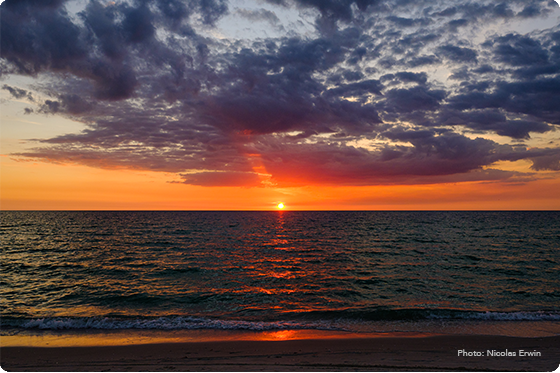
On June 8, 2022, the U.S. Environmental Protection Agency (EPA) issued a five-year National Pollutant Discharge Elimination System (NPDES) permit for Ocean Era’s offshore aquaculture project in the Gulf of Mexico. Ocean Era sought the permit to operate a trial run of the Velella Epsilon project. Effective July 8, 2022, the permit allows the Velella Epsilon facility to discharge wastewater related to the production of Longfin Yellowtail. As the first offshore aquaculture facility in the Gulf of Mexico, the Velella Epsilon project may provide important regulatory lessons for future aquaculture development.
The Velella Epsilon project is a submersible net pen system for offshore aquaculture. The facility will be operated for one 12-month production cycle and is anticipated to produce 17,000 Longfin Yellowtail. Critics of the project claim the increase in nutrients caused by the project will feed algal blooms and contribute to concerns about red tide. Critics of the project are also worried about the pen’s durability in storms, and the potential release of the fish into the ocean. However, Ocean Era claims the project will have a minimal impact on ocean ecosystems, and the project is designed to be able to handle severe weather events. The goal of the trial is to “help educate the community about the reality of offshore aquaculture… and the potential benefits of offshore aquaculture to fishing and boating communities.”
Prior to the issuance of the permit, the EPA and Ocean Era conducted an Environmental Assessment (EA) in compliance with the National Environmental Policy Act. The EPA issued a finding of no significant impact following the completion of an EA, meaning the information collected suggests the proposed project would not have a significant adverse effect on the natural environment. In addition to the EA, the EPA consulted with the National Marine Fisheries Service to prepare a Biological Assessment under the Endangered Species Act and made assessments under the Magnuson-Stevens Act and the Marine Mammal Protection Act to determine what effects, if any, the project would have on species and habitat protected under those laws. After the completion of the assessments, the EPA made minor adjustments to the permit conditions to protect hardbottom habitat in the Gulf, but determined that the project could proceed as planned with a permit.
After the permit was issued, environmental groups petitioned to have the permit decision reviewed by the Environmental Appeals Board (EAB). The groups alleged the EPA violated the Clean Water Act, Endangered Species Act, National Environmental Policy Act, and Marine Mammal Protection Act. The groups bringing the petition claim the EPA did not adequately consider the environmental impact of the project under the directives of each statute. The EAB held that the petitioners had failed to meet the burden of demonstrating that the EPA had not adequately assessed the project. However, the EAB remanded the permit, in part, sending it back to the EPA to clearly state whether it had determined under the Clean Water Act that unreasonable degradation of the environment would not occur. After the EAB ruling was issued, the EPA published a clarification stating they had determined the project would cause no unreasonable degradation of the environment.
The NPDES permit requires Ocean Era to prepare four different plans prior to operation of the Velella Epsilon project. This includes plans for water quality sampling, quality assurance, mitigation of environmental impacts, and Best Management Practices. After the EPA’s approval, the Velella Epsilon project is now the only NPDES permitted aquaculture structure in the Gulf. However, before the project can proceed, Ocean Era must obtain an additional permit from the U.S. Army Corps of Engineers and prepare and submit the four plans required by the NPDES permit. Thus, there are still several next steps before the project will be able to operate, and critics may bring additional challenges, but the NPDES permit is a major step forward for the project.












